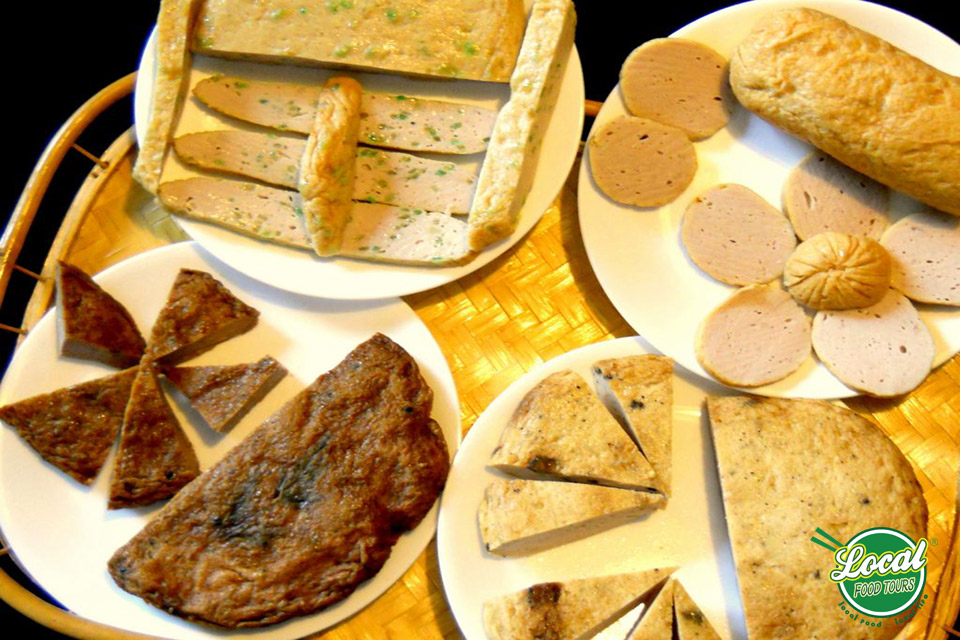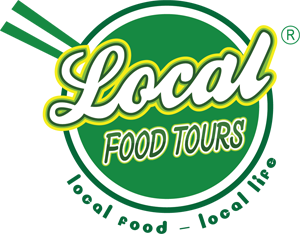Just like chicken and banh chung, gio cha Uoc Le is a must-have item for Tet.

Ancient village with famous brand
For the Vietnamese, in the rice tray of the New Year from the past, gio cha (Vietnam traditional sausage or lean pork paste) always keep the important position and has become an indispensable dish. Gio cha Uoc Le (Tan Uoc, Thanh Oai) is mentioned as a well-known trademark of gio cha in Hanoi traditional food for its delicious taste and 500-year tradition of making gio cha.
Uoc Le village is located in Tan Uoc commune, Thanh Oai district, about 30 km southwest of Hanoi. The village is far from the main traffic road so it is quite quiet and tranquil. UocLe is an ancient village, the vestiges of the village left have said that. The ancient Do Dong river flowing through 3 villages is now only a small creek. The fertile shelf of rivers lets the people grow mulberry and silkworms. It is not far from Nhue River and To River. People drove a boat on those rivers and traded with the Hanoians. The prosperity is also accumulated in the ancient pagoda of the village. The village has a very clean well in the field near So Pagoda. It is the village’s heart, the well represents the mortar to grind gio cha, thanks to the water in which, making gio cha has become prosperous.
It is unknown exactly when the profession of making gio cha has existed in this village. At the gate of the village, an old village gate, which perhaps is the most beautiful old village gate, maintains intact motifs preserved from the Mac Dynasty, embossed four letters by King Minh Mang “My Tuc Kha phong”(good customs).
Making gio cha in the village of Uoc Le (Tan Uoc, Thanh Oai, Hanoi) has been around for about 500 years. Historical records in the village also said that in Mac Dynasty there was a harem girl, who came from the village of Uoc Le. She returned the village and built the village gate and teach people to make gio cha. In the feudal period, this dish was a very noble food, the meal with gio cha was considered very sophisticated. Nowadays, gio cha Uoc Le becomes the famous brand in all over the country.
Never too much of a good thing
At present, gio cha Uoc Le still retains the brittleness and natural flavor. It is thanks to the special know-how of the traditional Uoc Le village that you can learn in Hanoi cooking class, with the sophisticated and elaborate stage of making gio cha from selecting meat, adding spicies to wrapping and boiled gio cha.
Selecting meat must be skillful and careful. Meat from sick pigs is smelly, from small pigs is flaccid. Lean pork paste made from the too big pigs will not be beautiful and not delicious. Pigs of only from 60 to 70 kg are best.
The meat is ground consecutively until it becomes sticky and crushed. When the meat is crushed, it is added with a little bit of flavored fish sauce and a little spices. If you would like the block of lane pork paste to be delicious, it is great to use banana leaves to wrap gio cha. Banana leaf must also carefully selected, young leaves inside and old leaves outside.
Boiling lean pork paste must also have the technical know-how. Boil the water and let lean pork paste be boiled for an hour. Lean pork paste after picked out the boiled water will be let right into the pot of cold water.
People in Uoc Le village bring the traditional profession and travels all over the country to make a living. On Hanoi street food tours, you can find many families making gio cha Uoc Le such as some families in the Vong Street, Hue Street, Le Van Huu Street, Tran Xuan Soan Street.
Other programs for reference: Hanoi street food, Vietnam food tours, food walking tour.

